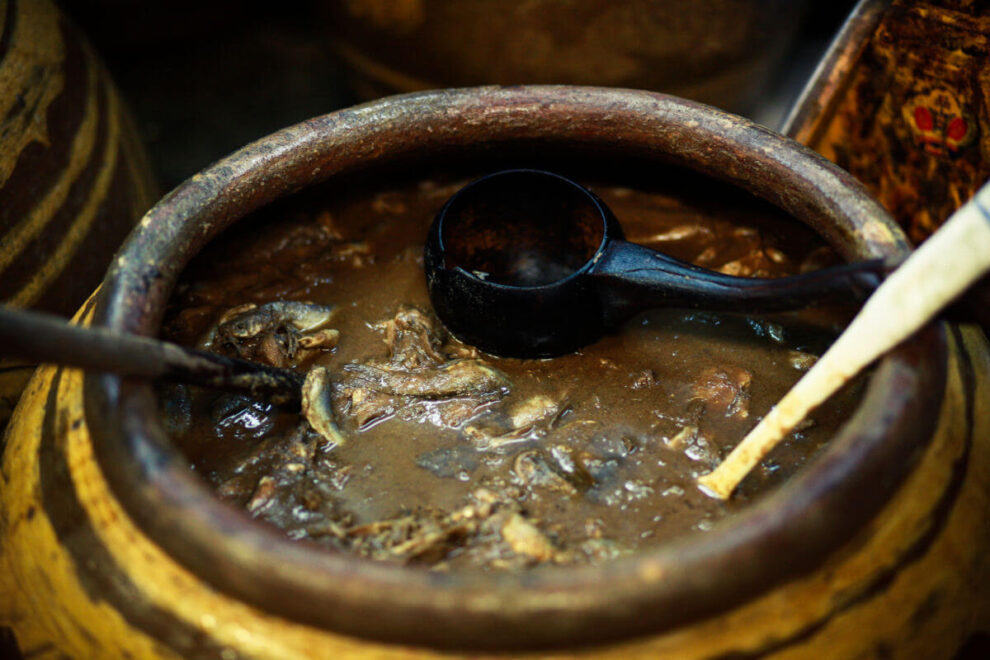Garum has been referred to as “the ketchup of the ancient world.” But this comparison doesn’t go nearly far enough. A bottle of ketchup may sit on every diner table, but it’s hardly a sauce for all occasions. In the oldest known cookbook, Apicius’s De re coquinaria (The Art of Cooking), compiled in the fourth or fifth century, the Roman fish sauce appears in nearly every recipe.
Salt was rarely used in ancient Greece and Rome, Julia Skinner writes in Our Fermented Lives (Storey Publishing, 2022), but fish sauce (a.k.a. liquamen in Latin or garon, as the Greeks called it) was indispensable. People added garum to dishes and sauces and served it as a condiment that went with almost anything.
Article content
“It was used — in surprisingly large quantities — in many Roman and Greek dishes,” food historians Andrew Dalby and Sally Grainger write in The Classical Cookbook (J. Paul Getty Museum, 2012). “The smell given off during its production was so bad that making garum in urban areas was sometimes outlawed.”
Greek and Roman fish sauce was made by layering whole fish (small and fatty specimens, such as mackerel, sardines and smelt) and the entrails of larger fish with salt. The packed clay pots were set aside to ferment in the hot sun for up to three months, the liquid then strained through a woven basket and bottled. The solids left behind after straining were sometimes pressed to make a cheaper, cloudier sauce before being used as a seasoning themselves.
(Skinner details how to make “Ancient Roman Garum” in Our Fermented Lives and references the only historical recipe to mention a ratio of salt to fish, from the Geoponica, a 20-book Byzantine collection written in the 10th century.)
As a testament to its importance, garum was “the only large-scale factory industry in the ancient world,” write Dalby and Grainger. “Archeological sites in southern Spain and around the Black Sea attest to the existence of a fish sauce industry as early as the eighth and seventh centuries BCE.”
These factories were usually close to beaches or harbours, so the fish were fresh from the net when they were packed into crocks. The fermentation process wasn’t bacterial — as is the case in lactic acid fermented foods, such as yogurt, sauerkraut and kimchi — but enzymatic. “The enzymes in the gut of the fish react with the salt to produce a pungent brine,” according to Dalby and Grainger.
As ubiquitous as it was in ancient Greece and Rome, garum has largely faded into obscurity, though some have been breathing new life into the “exquisite liquid,” as Pliny the Elder called it.
In The Noma Guide to Fermentation (Artisan Books, 2018), authors René Redzepi and David Zilber feature seven recipes for non-traditional garums, including grasshopper, roasted chicken wing, and rose and shrimp.
“A little bit goes a long way, when it comes to certain things: honesty, kindness, axle grease … and fish sauce,” write Redzepi and Zilber. “The most exciting thing is that we’re only beginning to understand the potential of garums. Rather than reaching for a pinch of salt in a recipe, we’ll sometimes kill two birds with one stone by using garum to bring both salinity and umami.”
In Montreal, author Taras Grescoe uses a plant propagator with the thermostat set for 32C — “a respectable Mediterranean summer temperature” — to turn sardines into liquamen. He developed a deep appreciation for fish sauce while writing The Lost Supper, and even made a pilgrimage to Spain’s University of Cádiz to taste Flor de Garum, said to be the first modern archeological recreation.
(To give contemporary fish sauce an ancient Roman touch, Dalby and Grainger add sprigs of oregano or rue to Vietnamese nuoc mam.)
Like the ancient Greeks and Romans, Grescoe considers fish sauce a necessity. “The real attraction of garum,” he writes, “is the way it imbues foods with intensity, vivacity, even wildness — the exact qualities so often lost by the time agriculture manages to get food to our tables.”
Source : National Post















